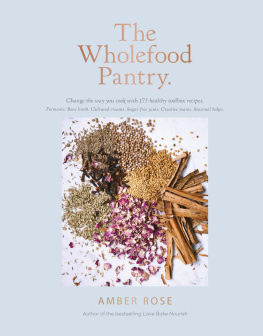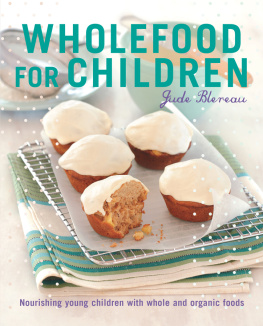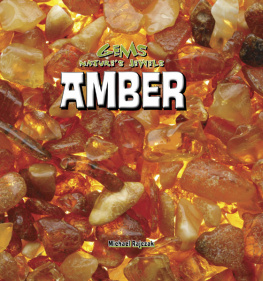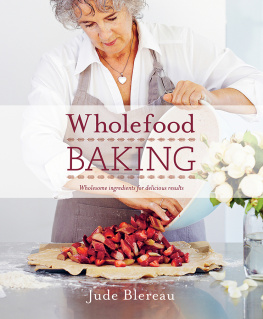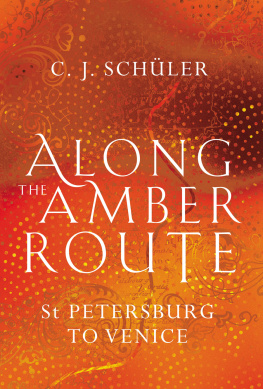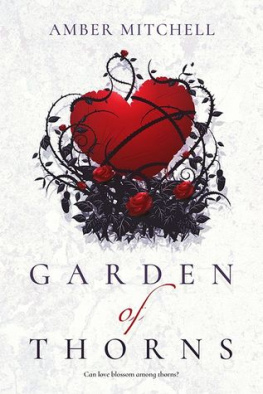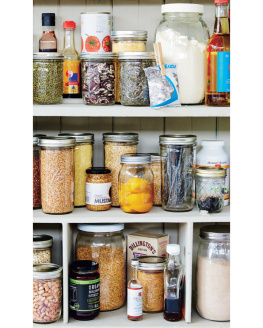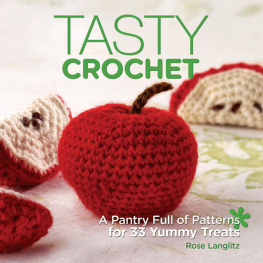Amber Rose - The Wholefood Pantry
Here you can read online Amber Rose - The Wholefood Pantry full text of the book (entire story) in english for free. Download pdf and epub, get meaning, cover and reviews about this ebook. year: 2018, publisher: Octopus, genre: Home and family. Description of the work, (preface) as well as reviews are available. Best literature library LitArk.com created for fans of good reading and offers a wide selection of genres:
Romance novel
Science fiction
Adventure
Detective
Science
History
Home and family
Prose
Art
Politics
Computer
Non-fiction
Religion
Business
Children
Humor
Choose a favorite category and find really read worthwhile books. Enjoy immersion in the world of imagination, feel the emotions of the characters or learn something new for yourself, make an fascinating discovery.
- Book:The Wholefood Pantry
- Author:
- Publisher:Octopus
- Genre:
- Year:2018
- Rating:3 / 5
- Favourites:Add to favourites
- Your mark:
- 60
- 1
- 2
- 3
- 4
- 5
The Wholefood Pantry: summary, description and annotation
We offer to read an annotation, description, summary or preface (depends on what the author of the book "The Wholefood Pantry" wrote himself). If you haven't found the necessary information about the book — write in the comments, we will try to find it.
The Wholefood Pantry — read online for free the complete book (whole text) full work
Below is the text of the book, divided by pages. System saving the place of the last page read, allows you to conveniently read the book "The Wholefood Pantry" online for free, without having to search again every time where you left off. Put a bookmark, and you can go to the page where you finished reading at any time.
Font size:
Interval:
Bookmark:




Select one of the chapters from the and you will be taken to a list of all the recipes covered in that chapter.
Alternatively, jump to the to browse recipes by ingredient.
Look out for linked text (which is in blue) throughout the ebook that you can select to help you navigate between related recipes.
You can double tap images to increase their size. To return to the original view, just tap the cross in the top left-hand corner of the screen.
Kitchen staples and basics recipes are the nuts and bolts of every cooks kitchen. They are what I like to call the toolbox recipes. They are the flavoursome, nourishing base components and they are also the things that can finish a dish to make it sing. In my kitchen they are essential go-to recipes that can be adapted throughout the year to create seasonal, delicious meals and satisfying bakes.
This is a reference book of all my favourite and most useful toolbox recipes. All the recipes are free from refined sugar, super healthy, delicious and above all, easy to prepare.
The Wholefood Pantry is filled with all the recipes you will need to create healthy and beautiful syrups, chutneys, refined sugar-free jams, enzyme and probiotic-filled lacto pickles (ferments), cultured creams, healing broths, spice mixes, dips, nourishing desserts, nut milks, nut butters, sauces, essential marinades, irresistible raw chocolates and so much more.
Armed with my simple, easy and delicious toolbox recipes you will be in control of what goes into your food and how it is prepared. You will then naturally have the confidence to add seasonal ingredients to adapt and embellish your cooking and baking as the seasons change to ensure maximum nutrition and flavour.
I grew up in New Zealand in a little wooden homemade house in the middle of a rambling orchard filled with wild flowers, heritage fruit trees and a garden full of heritage vegetables. I spent my days as a young girl cooking and eating from the garden and was endlessly appreciative of the sun-ripened fruits and deliciously colourful and intensely flavoured vegetables that made up my snacks and meals on a daily basis. I spent a lot of my childhood helping my mum in the garden and in the kitchen, harvesting fruits for jams, picking herbs for pesto, stirring bubbling pots of tomato sauce, picking rose petals for intoxicatingly fragrant wild rose petal jam and scooping, peeling and chopping all manner of colourful heritage produce that we made into preserves at various times of the year, to last through the seasons. When you have a garden and not a row of supermarket aisles in front of you, you have to learn to cook and bake with what the seasons dictate and to turn simple ingredients into beautiful, colour-filled feasts. Cooking and eating seasonally means there are certain times of the year when vegetables or fruits are in abundance. Its during these times that mountains of basil get made into pesto and popped in the freezer for use later in the year, or when the fruit thats dripping off the trees is made into pickles, chutneys, sauces and other preserves.
Of course you dont need a garden to make all these wonderful toolbox delights. Although many of the recipes in this book are inspired by my childhoods seasonal, garden-to-table cooking experience, more often than not they can be whipped up in a flash with a minimum of ingredients and fuss. I have loved carrying on that approach to cooking even when, for many years, I lived in London and didnt have a garden of my own.
The savoury section contains the dips, pts and other easy recipes that I go back to again and again. In the sweet section, the basic baking recipes are my old favourites that I love to adapt as the seasons change. They are so easy to whip up that its almost a sin, but for me its the simple things that always bring so much pleasure: baking my own loaf of bread, making my own jam and whipping up nutritious desserts. I hope you find some pleasure and inspiration in these pages to help you fill your shelves and old jam jars full to the brim with delicious homemade toolbox delights.
Much Love,
Amber Rose xx

The words nutrient dense seem to have acquired a bit of buzz about them lately. Its a catchphrase we hear more and more, but with good reason: eating nutrient-dense produce is important for our health and the health of generations to come.
Unfortunately, most of the food we buy from supermarkets has been bred for shelf life and not nutrition. Often it is grown in mineral-deficient soils, or even worse, hydroponically (in polytunnels in water). On top of that, it has been treated with an array of chemicals and pesticides, then picked before it is ripe so that it lasts longer on the shelf. This means the food has lower levels of disease-fighting nutrients in it, making it even less nutritious.
It can be hard to find nutrient-dense fruit and veg, and also to maximise the nutrition of the produce you are eating, but here are a good few tips to help you on the way
* Cut out processed food and refined food. These contain empty calories and do not nourish us.
* Buy local and in-season produce whenever you can. This will ensure fruit and veg is naturally ripe and hasnt been in cold storage for too long. Naturally tree-ripened fruit is more nutritious.
* Choose fruits and veg grown from heritage seeds and trees. It is well known that they are far more nutritious than their more modern options, which are usually bred for shelf life and looks.
* Choose dark coloured fruit and veg, both of which contain increased amounts of antioxidants and minerals. Dark berries and dark green leaves are much more nutritious than their lighter coloured counter parts.
* Buy organic food when ever you can. If money is an issue, at least try to get organic when buying produce that has thin, edible skin that isnt usuallu peeled things like berries, peaches, tomatoes etc. Non-organic versions will be covered in chemicals. Produce with thicker skins, like carrots and pineapples, is usually peeled before eating anyway, which will remove most of the chemicals. These chemicals will contribute to a damaged gut, a less effective immune system and hormone issues, amongst other things. When plants have been grown in chemicals, there is no way that the soil can be healthy, if the soil is not healthy then the plants will not be healthy, and so they will not make for nutritious food.
* Eat high levels of traditional, healthy fats and oils. We require a minimum of 1200 IU daily of naturally sourced Vitamin A, without which our bodies cannot absorb key minerals and vitamins. Eat your fruit and veg along side healthy fats: add good-quality cold pressed oils to your salad dressings, and add cream, yogurt or coconut cream to your fruit or desserts. Many of the vitamins and minerals in fruit and veg are fat soluble, so if you eat them with healthy fat then you maximise your nutrient uptake.
Font size:
Interval:
Bookmark:
Similar books «The Wholefood Pantry»
Look at similar books to The Wholefood Pantry. We have selected literature similar in name and meaning in the hope of providing readers with more options to find new, interesting, not yet read works.
Discussion, reviews of the book The Wholefood Pantry and just readers' own opinions. Leave your comments, write what you think about the work, its meaning or the main characters. Specify what exactly you liked and what you didn't like, and why you think so.

